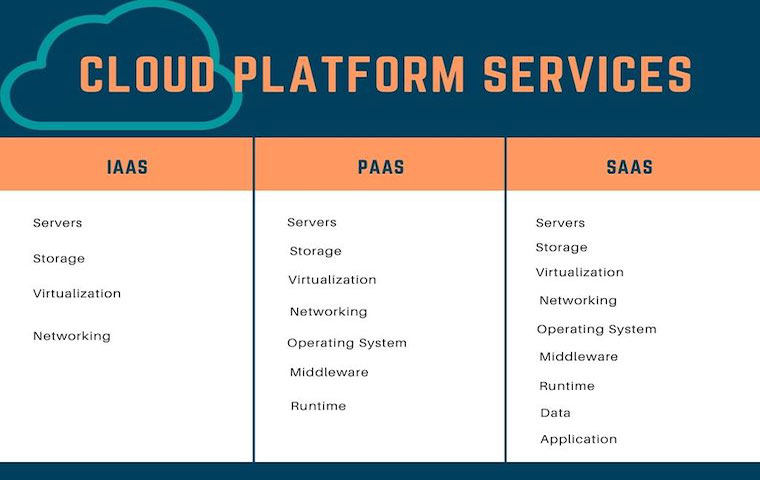In-App Purchases vs Ads: Which Strategy is Best?
You’ve created your app, and people are starting to download,...
We use cookies for our website to give you the most relevant experience by remembering your preferences. By clicking “accept”, you consent to use of ALL the cookies
This website uses cookies to improve your experience while you navigate through the website. Out of these, the cookies that are categorized as necessary are stored on your browser as they are essential for the working of basic functionalities of the website. We also use third-party cookies that help us analyze and understand how you use this website. These cookies will be stored in your browser only with your consent. You also have the option to opt-out of these cookies. But opting out of some of these cookies may affect your browsing experience.
Necessary cookies are absolutely essential for the website to function properly. These cookies ensure basic functionalities and security features of the website, anonymously.
| Cookie | Duration | Description |
|---|---|---|
| cookielawinfo-checkbox-functional | 11 months | This cookie is set by GDPR Cookie Consent plugin. The cookie is used to store the user consent for the cookies in the category “Analytics”. |
| cookielawinfo-checkbox-functional | 11 months | The cookie is set by GDPR cookie consent to record the user consent for the cookies in the category “Functional”. |
| cookielawinfo-checkbox-necessary | 11 months | This cookie is set by GDPR Cookie Consent plugin. The cookies is used to store the user consent for the cookies in the category “Necessary”. |
| cookielawinfo-checkbox-others | 11 months | This cookie is set by GDPR Cookie Consent plugin. The cookie is used to store the user consent for the cookies in the category “Other. |
| cookielawinfo-checkbox-performance | 11 months | This cookie is set by GDPR Cookie Consent plugin. The cookie is used to store the user consent for the cookies in the category “Performance”. |
| viewed_cookie_policy | 11 months | The cookie is set by the GDPR Cookie Consent plugin and is used to store whether or not user has consented to the use of cookies. It does not store any personal data. |
Functional cookies help to perform certain functionalities like sharing the content of the website on social media platforms, collect feedbacks, and other third-party features.
Performance cookies are used to understand and analyze the key performance indexes of the website which helps in delivering a better user experience for the visitors.
Analytical cookies are used to understand how visitors interact with the website. These cookies help provide information on metrics the number of visitors, bounce rate, traffic source, etc.
Advertisement cookies are used to provide visitors with relevant ads and marketing campaigns. These cookies track visitors across websites and collect information to provide customized ads.
Other uncategorized cookies are those that are being analyzed and have not been classified into a category as yet.
Cyberia Tech, Inc. respects your privacy. This Privacy Policy explains how we collect, use, and share your information. By using our services, you agree to this policy. If any other agreements conflict with this Privacy Policy, the terms of those agreements prevail.
Cyberia Tech complies with the EU-US and Swiss-US Privacy Shield Frameworks for handling personal data from the EEA, UK, and Switzerland. In case of any conflict, the Privacy Shield Principles prevail. Learn more at Privacy Shield. Key Definitions
Information linked to an individual, transferred from the EEA, UK, or Switzerland to the U.S.
Data revealing race, religion, health, sexual orientation, and similar categories.
Effective Date: [ 2025 / 11 / 29 ]
Welcome to The Cyberia Tech ! By accessing or using our website or services, you agree to
comply with and be bound by these Terms of Use and our Privacy Policy. If you do not agree with
these terms, please do not use our Services.
Loading
0 %

Have you ever wondered how codes will turn into features? Web app development platforms are responsible for bringing apps to life.
Without them, data are just meaningless characters that do not have any function. These platforms are the best companion for developers since they carry all the necessary features together.
The features of web application development platforms will facilitate the development process and save some time. Through utilizing a web platform development will become much easier, and the developers do not need to make everything from scratch.
In this article, we are going to analyze various platforms that are used for web app development and discuss their features.
Table of Contents
It’s typical to mix up frameworks with platforms, so let’s break down the differences. Frameworks provide developers with features and properties that aid in the creation process and the operation of the app.
Web App Development platforms, on the other hand, are larger and more complicated than frameworks. A platform integrates and supplies both the hardware and software of a web app.
Furthermore, a platform provides its users with a choice of services such as Amazon AWS, Microsoft Azure, and Google Cloud Platform.
In this paper, we will examine each of these well-known platforms and the services they offer.
Finally, we can determine which one is the best fit for our own web platform development. Before we proceed, consider the definition of cloud computing platforms. Consider the definition of cloud computing platforms before proceeding.
Compared to on-premise software, cloud environments are less physical for users, making it difficult for them to imagine what they are.
When you use cloud platforms and run your applications there, you lessen the burden on your machines.
You probably assume that platforms for building web applications must have huge data centers, and that is accurate.
The large cloud service providers have data centers spread out throughout the globe in diverse locations. Their users can easily install their apps because to the geographic distribution of their data centers.
As a result, their services are accessible to all potential clients worldwide. Their offerings can be divided into three categories: software as a service (SaaS), platform as a service (PaaS), and infrastructure as a service (IaaS).
The following table lists the cloud platform services:

IaaS is the minimum integration of the cloud provider where you manage the software on your computer and supplies you with the hardware groundwork.
On the other hand, a SaaS handles all of the app’s processes in the cloud, you don’t need to install the software on your computer, and you will have access when you reach the cloud.
These were the general features and services that one may receive from a cloud provider. In the next part, we will analyze popular options for web platform development.
Both low code platforms and no code platforms have emerged as game changers in the area of web app development platforms. Low code platforms offer a dynamic environment in which developers may design web apps with exceptional speed and efficiency.
By providing pre-built components and attractive visual interfaces, these systems dramatically decrease the need for considerable coding. No code platforms, on the other hand, take the pioneering notion a step further by allowing users without coding skills to build online apps using visual programming and drag-and-drop capability.
While low code platforms still require some coding skills, no code platforms fully unlock the unstoppable potential for individuals and organizations to convert their ideas into practical online apps, even if they do not have any coding experience.
Whether you choose low code or no code, these web app development platforms provide unrivaled opportunities for innovation, allowing developers and non-developers alike to ignite their creativity and build remarkable web applications without having to overcome the traditional barriers of complex coding processes.
Microsoft Azure is a platform for cloud computing that provides a range of online services that can assist developers in creating, hosting, and deploying their web applications.
It’s called “cloud computing” because you use the pay-as-you-go model and operate your software on Microsoft servers, which is very cost-effective.
In addition to all of Azure’s advantages, it also offers a vast array of services that fall under the computing, storage, and networking, as well as some additional services, three primary categories.
Azure VM (Virtual Machines) is the name of the most popular computing solution that Azure has offered since its inception.
It is a part of the IaaS and serves as a platform for customers to host their apps without the need to purchase the necessary hardware. Your app configuration will be more swift and flexible.

There are more computing options like Azure Container Instances which is a complete package of everything you need for an app.
Another service is Azure Function which supports all of the programming languages, and the list will go on
Unexpectedly, Azure provides a wide range of database and storage options. It has both hierarchical storage and non-hierarchical storage, or “Blob Storage”.
Additionally, it provides NoSQL databases, which can handle bigger volumes of data, as well as standard relational databases known as SQL.
In particular, networking services enable customers to link their cloud data with their on-premises software and monitor activity on platforms for developing online applications.

You will require an Azure Virtual Network to link your cloud-based virtual machines and other resources.
If your program grows in popularity, you may require virtual machines (VMs) in more than one location.
Virtual network (VNet) peering, which merges your networks into a single logical entity, or Azure Virtual Private Network (VPN) may be used to securely link all virtual machines.
The private connection required for Azure ExpressRoute to function is one explanation for the service’s high cost.
Only a small subset of Azure’s many capabilities for building websites and web applications have been covered here.
In the following section, we’ll take a look at Amazon AWS, a fierce rival, to see how it stacks up.
Without a question, Amazon AWS is the most widely used cloud computing service in the world.
It’s quite similar to Microsoft’s Azure, but it’s packed with extras to meet any need a programmer may have. Amazon AWS proposes several extraordinary services in addition to the standard computing and storage options.
Amazon’s Elastic Cloud Computing (EC2) is a superior option than Microsoft Azure for highly scalable data due to its higher upload speeds.
Amazon provides a wide range of storage options, including the standard Amazon Simple Storage Service (S3), the long-term data storage option Amazon Glacier, and so on.
The remaining services are also fairly similar. Let’s learn more about what Amazon Web Services (AWS) has to offer.
Amazon AWS offers a whopping number of over 200 services which brings AWS to the top of web app development platforms.
Here, we’ll take a look at a few services that can satisfy the needs of every programmer.
Let’s check over the menu of offerings:
When you order a Snow gadget from Amazon, the company will bring it to you and then pick it up again once you’re done using it so that your data can be uploaded to the cloud safely.
This was only a taste of all that Amazon Web Services has to offer; in the following section, we’ll look at Microsoft Azure, one of Amazon’s younger competitors.

Google has always been our number one companion from the moment when we open the browser. Google’s many products and services had a need for data storage on the cloud, thus the company saw no need to wait to join the market and compete with existing offerings.
Although Google has other platforms, it has made an effort to expand the PaaS capabilities of Google Cloud Platform (CGP), which now ranks third in the industry.
CGP’s user interface is guaranteed to be superior than those of competing systems. Some programmers argue that GCP’s documentation and structure are superior to those of the other two.
Its pricing are also more reasonable than those of competing web app development platforms.
In comparison to competing platforms, GCP’s offerings are largely redundant. It’s working on a number of different retail, medical, and video streaming initiatives.
So, let’s take a look at a real-world program and dissect the building blocks of a web app.
Let’s pretend you’re working on a health monitoring and data collection platform. You’ll need to decide on a cloud hosting service before you can get started on developing your app.
You can choose between a relational database and a NoSQL database based on the size of your projected user base. The authentication capabilities of your app are also crucial, so you should ensure that users can log in quickly and securely.
Some healthcare platforms function much like an API (Application Programming Interface) between the users’ mobile phones or smartwatches and the medical facilities.
This information might be helpful in making a medical diagnosis or resolving an insurance claim.

Since a patient may need to be reminded to take a certain medication or about a change in appointment arrangements, push notification and emails should be the primary services of a health care app.
A web app development platform plays a crucial role in enabling the creation of modern finance platforms.
It provides the tools and infrastructure necessary for developing secure and feature-rich platforms that facilitate seamless online transactions and personalized financial services.
The collaboration between these two elements drives innovation and accessibility in digital finance.
What is web application development platform?
Creating applications that run on servers elsewhere and are accessed by the user’s device through the Internet is what is known as “web application development.” A web application (web app) is a programme that may be used on the web without first downloading it.
What are web application platforms?
Platforms for creating web apps are known as web app development platforms.
Due to the wide variety of available web application development platforms, there is no simple solution to this topic.
There are many possibilities for your web platform development project with each of them.
After you have a rough draft of your web or mobile app, you should investigate these options and do a comparison of their features, costs, and user experience (UX).
For your web app development Platforms, Cyberia is delighted to offer advice based on our extensive expertise with the platforms mentioned above.
Please share your thoughts on this topic and recommend a platform that has proven itself to be ideal for building web applications. All the best!
You Can Get More Information!
